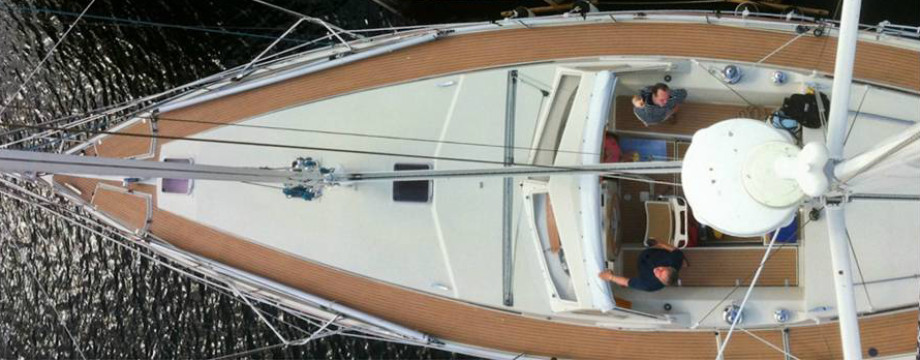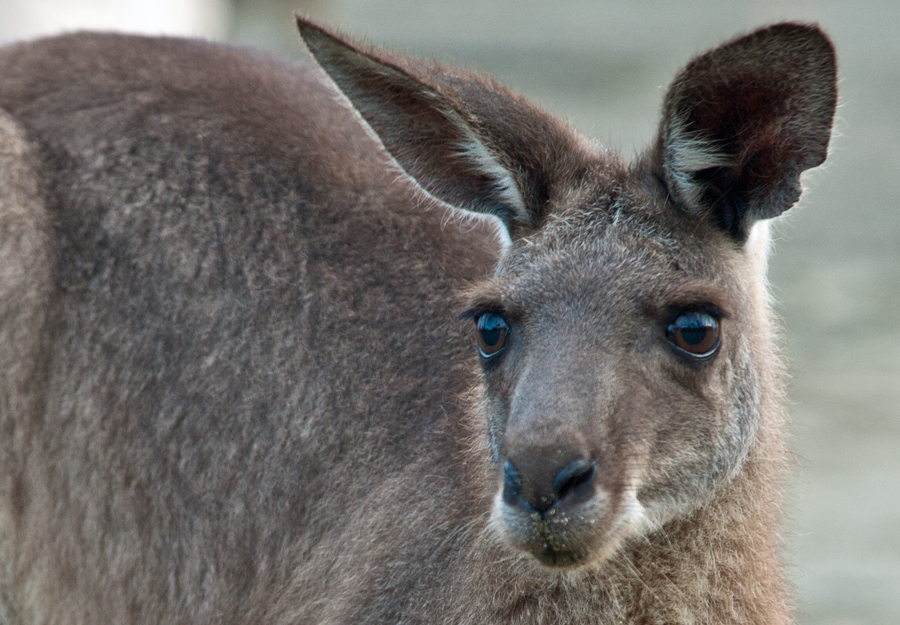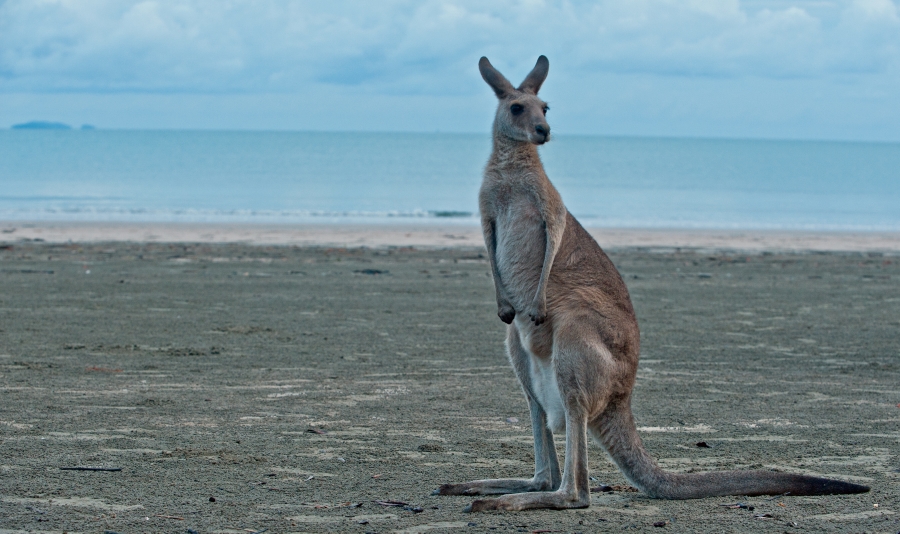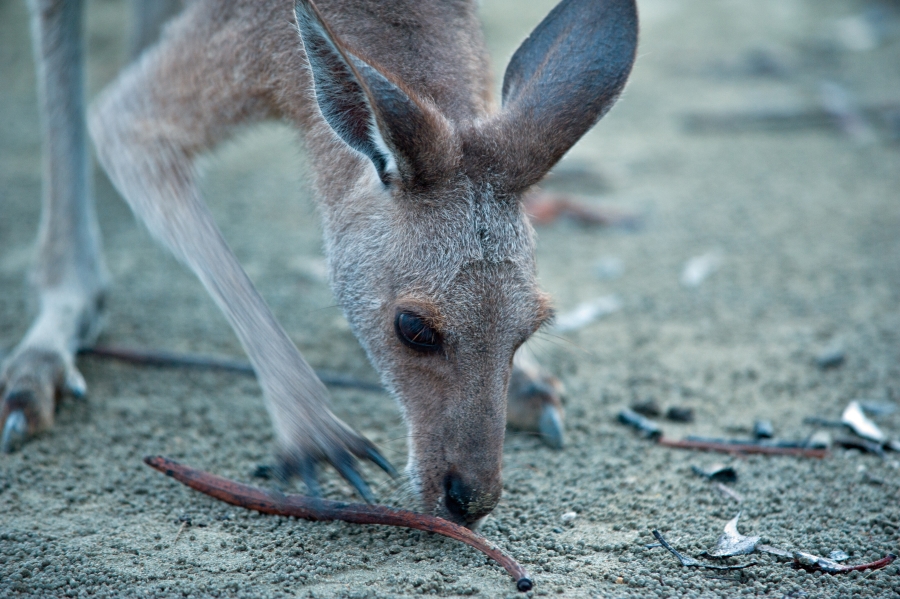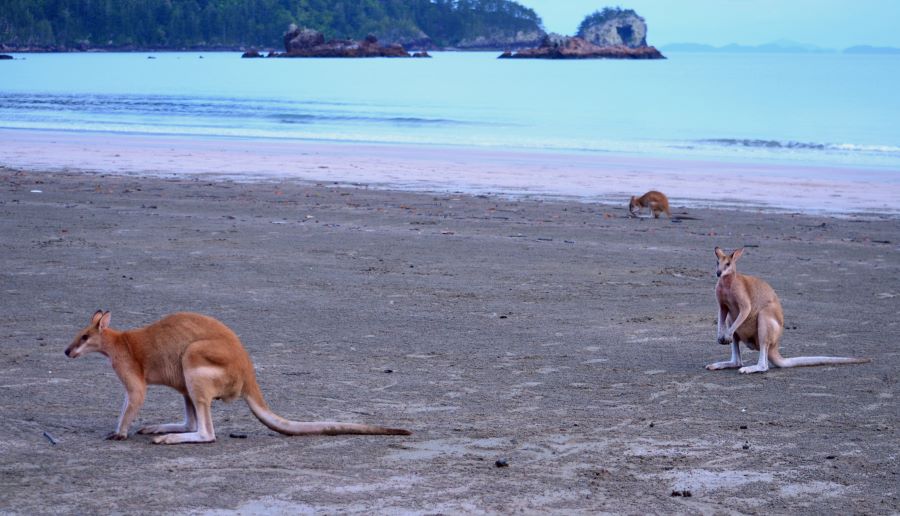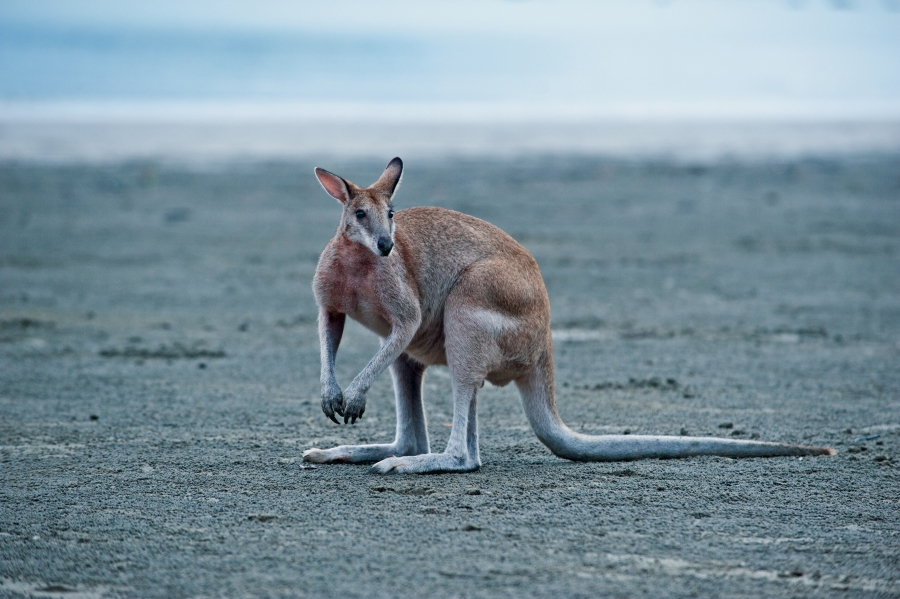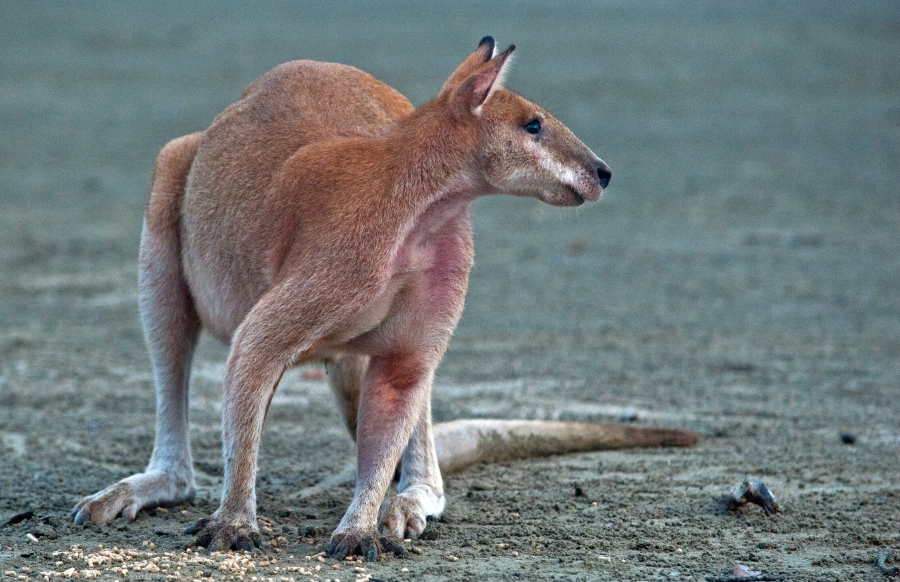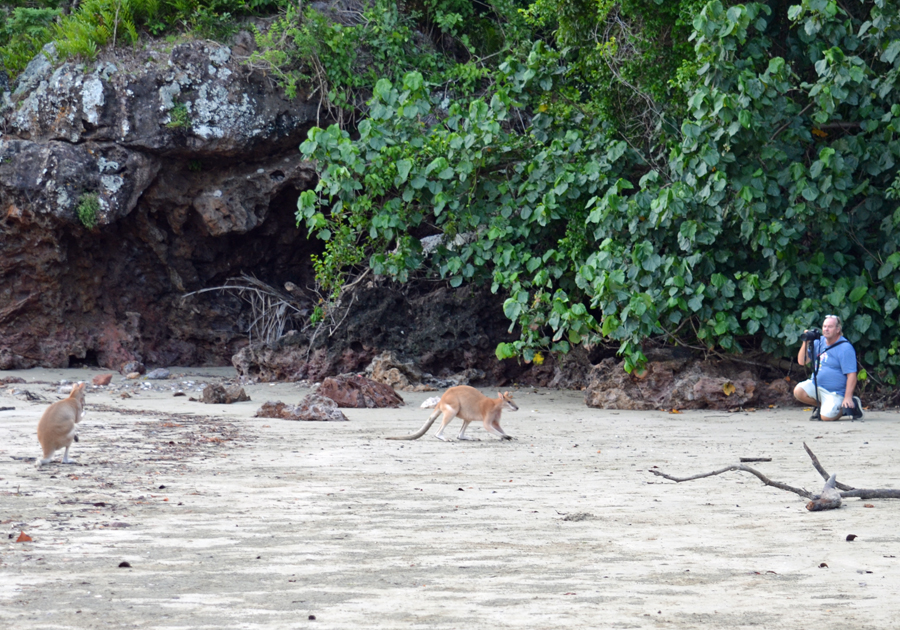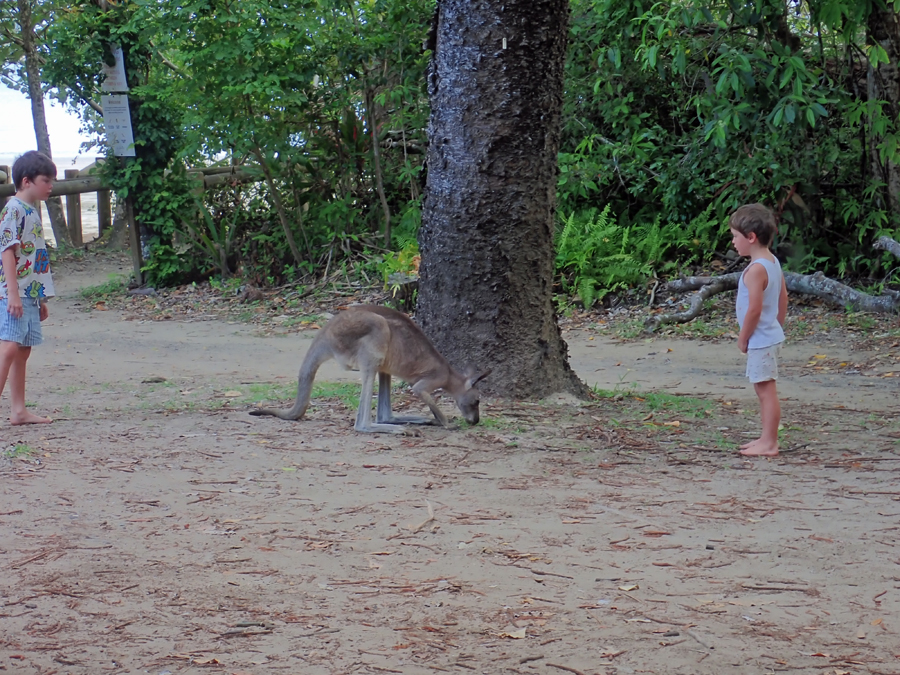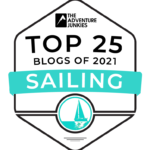I can begin this post by saying we’ve seen kangaroos. Sadly, they were dead ones. A good portion of vehicles here sport what they call Roo Guards. Judging by the number of vehicles we see fitted with these, it might be a safe assumption that when driving country roads, hitting a kangaroo is not uncommon. This is further validated by the fact we saw a total of 10 dead roos on this trip, so far. I can only hope at this point in our journey north that some made it safely to the beach where we are heading.
We both came here with a desire to see kangaroos, wallabies, and koala bears in their natural environments. Ideally, we’d like to get pictures of each. And, a prize picture would be a baby joey in the pouch.
Our 1,000 km journey ends at Cape Hillsborough National Park, located approximately 50 kilometers north of Mackay in Queensland. It is renowned for its rugged beauty where rainforest meets the ocean. The park encompasses diverse habitats, including rainforest, eucalypt forests, and mangroves, supporting a rich array of wildlife. It is these mangroves that bring us to the area since the seed pods attract kangaroos and wallabies as they wash up on the beach.
Apparently, the kangaroos like to get up early and arrive just before sunrise catching the morning tide. The area guides say to be on the beach at sun up – about 5 am. This is not a problem since lately I have been nodding off at about 9 pm and getting up at 4 am. Lord knows why I fell into this sleeping habit. It has been with me since arriving here. It might be leftover from our watch schedule on our journey here. I am always an early riser, but this is getting ridiculous. I can’t seem to shake this.
We’ve rented a cabin within steps of the beach to ensure we take full advantage of the events. There are some dos and don’ts to ensure the kangaroos aren’t scared away. One of them is to not use a flashlight. So, we leave our cabin at about 4:30 with the main goal at the time being not to trip on a tree root down to the beach and break a leg. We are in the middle of nowhere with no cell service. I can’t help but think this would not be a good spot to be evacuated from. The helicopter or screams of pain might scare away the animals. Although, this wasn’t mentioned in the rules.
We make it down to the beach without harm. It’s cloudy. There is no moon and we can barely see our feet. How are we supposed to see animals?
Something we realized much later was we should have checked the tides before booking our cabin. It turned out that the beach basically disappears during high tide. Thankfully, the tide was out during the mornings we were there. Else, I am not sure if critters still come in the early mornings. We got lucky on this.
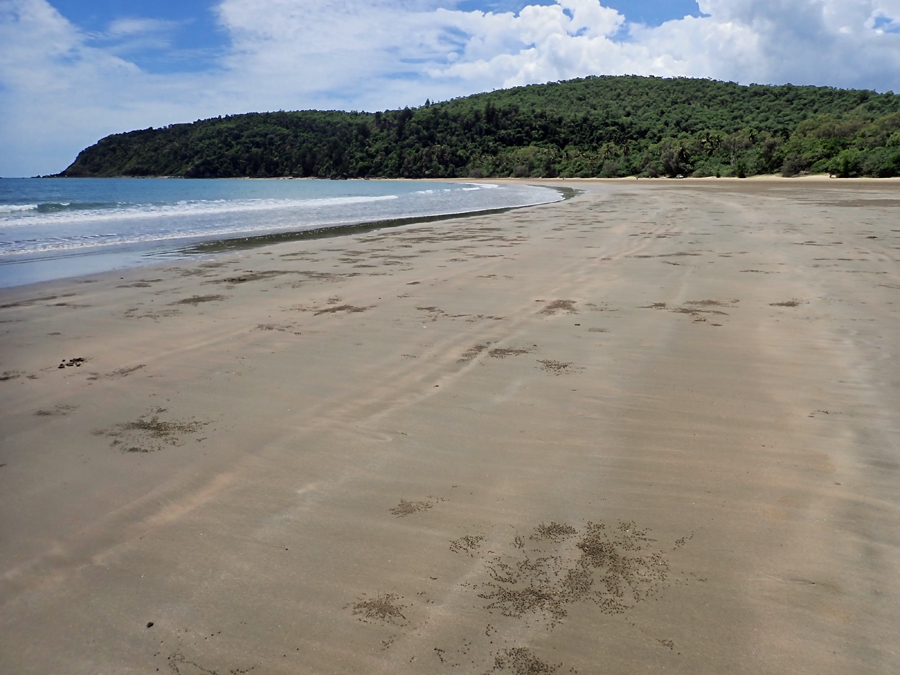
This is with the tide out. With the tide in, the water is all the way up to the trees and the beach is gone.
The horizon gets a little lighter. It’s still a good 30 minutes before sunrise, but we can just about see what we think might be a kangaroo. It turns out we spotted other people also in search of kangaroos.
Then, down toward the water, is it? Could it be? I think it is. Yes! It’s a kangaroo. And, it’s alive.
We spent the next couple of hours watching these amazing creatures feast on seed pods. As soon as it was light enough to start taking pictures the big lens came out and the camera’s ISO was set to the highest level. I swear, my faithful Nikon SLR can just about take pictures in the dark. I once shot a rodeo (lots of action and movement needing fast shutter speeds) at night, under artificial light and no flash.
Thankfully, the kangaroos and wallabies are not that energetic. They are content standing still munching on seed pods. I can use the early morning natural light and lower the ISO as it gets brighter. They are also not afraid of people. If a person approaches too close, they hop away. But, interestingly enough they have no issue coming close to humans if it’s on their terms.
I was down on the sand, taking a couple of pics of a wallaby with the ocean and islands in the background. I was about 10 meters away and some clown runs toward the critter with his iPhone hoping to get a close-up and ruins my shot as it hopped away. People!
I watched a lady trying so hard to get a picture of a wallaby in front of her. The wallaby wasn’t being cooperative (as wild animals are). I was watching a kangaroo that decided to sneak up behind her going after a seed pod by her foot. The kangaroo stealthily got the pod and turned to hop away. It came within inches of her. If only she had looked down. She never knew it was there.
Anyway, the pictures in this post are the result of our efforts after spending a couple of early mornings on the beach. Hope you enjoy them.
Last but not least, the prize picture we were hoping to get.
